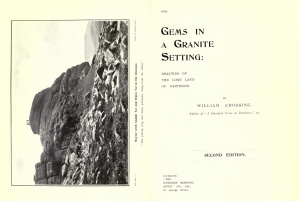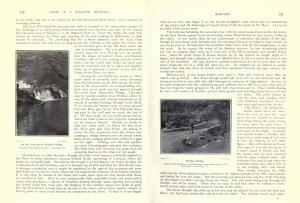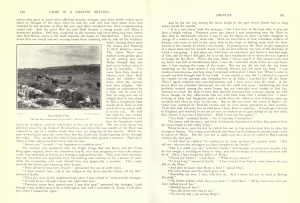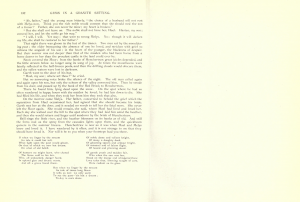THE TINNER OF THE RED BROOK
BACKGROUND TO THE LEGEND OF THE TINNER OF THE RED BROOK
The legend of The Tinner of the Red Brook is first recorded by William Crossing in his book Gems in a Granite Setting (1905). He describes Henchertraw, which is a valley through which the Red Brook passes just above the point where it joins the Bala Brook, as one of the most beautiful places on the moor, and locates the love scene between Melys and Hael here.
Crossing appears to set the story in medieval times. Moorish raiders are mentioned as the pirates who take Melys’s father prisoner. In the MED Theatre play Melys we suggest a connection with Egyptians, the late medieval term for Roma people who moved from the Punjab via North Africa into Europe, particularly Spain, at this time. Roma and Gypsy (from the term Egyptian) culture has been a constant presence on Dartmoor since the medieval era. In MED Theatre versions of the story we also bring in the fact that the hare was held to be a sacred animal in the area of the moor west of Holne, where the Red Brook is located, as recorded by Eden Phillpotts in his novel Demeter’s Daughter.
It could be that Crossing sets his version rather earlier than the MED Theatre version. There are records of crusader fleets leaving Dartmouth in the 12th and 13th centuries to free the Spanish peninsula from the Moors. We do not currently know where Crossing got his information from, as is the case with a number of the stories that he tells in Gems in a Granite Setting.
Below is a summary of the story as told by Crossing along with interpretations by MED Theatre, and various schools we have worked with.
The Story
Garth is a tinner living in a cottage by the Red Brook. He has a young son, Hael, whom he looks after on his own after the death of his wife. One day, on arriving at his tin works higher up the stream, Garth discovers a small child alone, wrapped in a cloth, stained with blood. The child recognises the kindness in Garth’s face and introduces herself by saying “Me Melys.” After an unsuccessful search for the little girl’s parents, the villagers urge Garth to take her home and care for her, as a companion for his son, Hael.
As Hael and Melys grow up together their friendship grows into love and one evening in Henchertraw, as they look at the water running past, Hael confesses his feelings to Melys and finds they are reciprocated. He compares their union to the two streams meeting and wishes they could flow on together for the rest of their lives in the same way.
However, shortly after, a stranger appears on horseback while Garth and Hael are working at the tin works. He explains that one day in the mist, thirteen years previously, he was crossing Dartmoor towards Dartmouth to take his baby daughter, wrapped in a cloth, by ship back to her dead mother’s family in Spain. As he descended from the high moor his horse stumbled on tin streaming spoil and he was thrown on his head and lost consciousness. When he came round he found himself on deck and the ship had already left port. His companions, who had become separated from him in the mist, had found him unconscious but his daughter was nowhere to be seen. Not wishing to miss the ship, they had presumed she was dead and, putting him across the back of his horse, managed to bring him to Dartmouth.
While on board the ship, he was captured by pirates and held captive in a Spanish prison for the thirteen years. Now, on his release, he had returned to England and come back to the place where he had last seen his daughter in hope of finding some trace of her.
On hearing the story, Garth realises that Melys is the daughter that this man speaks of and he asks Hael to go and fetch her. Hael asks who the noble stranger is and Garth explains that the man is Melys’ father. Hael is devastated to hear this, realising that Melys will not be allowed to marry a poor tinner’s son and so he tells his father about his love for Melys. Garth, understanding his son’s concerns, urges him to hide Melys instead. Hael’s conscience, however, will not allow him to deceive Melys in this way and he tells her the truth.
Melys goes back with her father, leaving Hael and Garth alone. They spend a sorrowful evening by the fire, Garth missing Melys and fearing for his heartbroken son. That night, Hael cannot sleep and walks out into the blizzard. When days dawns he is still missing, and on going out to look for his son, Garth finds his frozen body under a tree in Henchertraw.
Meanwhile, Melys’ father has been persuaded by her grief that she ought to be allowed to return to Hael and marry him, and so they make their way back to Garth’s home by the Red Brook only to find him grieving over Hael’s body. Melys joins Garth in his grief and decides to remain on the moor with him, to take care of the man who raised her and in memory of her love for his son.




